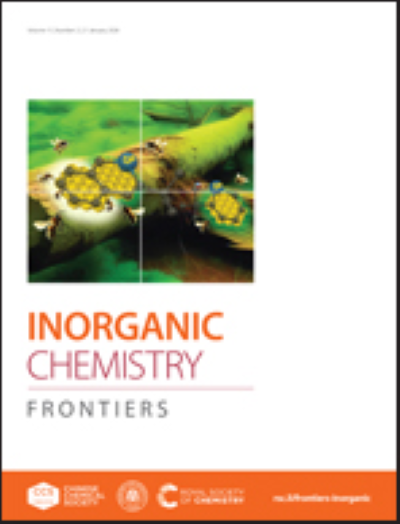下一代烟火材料用钡基分子钙钛矿含能化合物
IF 6.1
1区 化学
Q1 CHEMISTRY, INORGANIC & NUCLEAR
引用次数: 0
摘要
传统的烟火组合物是通过机械混合可燃性和氧化性物质而形成的,它面临着配方复杂、化学计量不准确以及产生颜色反应效率低下等问题。新兴的嵌入三元离子的分子钙钛矿含能材料因其制备简单、可调节性强等优点,已成为开发炸药、推进剂、点火剂和高能杀菌剂的新平台,但其在烟火方面的应用潜力尚未得到充分的研究。本文通过将高氯酸钡(II)与咪唑(Him+)和喹啉(Hqe+)分别组装,得到了两种新的高能化合物,即立方钙钛矿结构的(Him)(Ba)(ClO4)3 (IBP)和层状钙钛矿结构的(Hqe)2(Ba)(ClO4)4 (QBP)。与高氯酸钡相比,IBP和QBP的分解峰温度都超过290℃,水分稳定性也高得多。由于QBP呈层状结构,其摩擦敏感性(144 N)明显低于IBP (5 N)。此外,在分子水平上,钡(II)、氧化高氯酸盐离子和富碳燃料成分紧密堆积,使QBP具有高效稳定的燃烧性能,最大燃烧压力可达550 kPa,最大压力脉冲速率可达10.48 MPa/s,火焰呈明亮的绿色。这些发现很好地证明了结合发光成分、氧化阴离子和有机阳离子的分子钙钛矿含能化合物是下一代烟火材料的有力竞争者。本文章由计算机程序翻译,如有差异,请以英文原文为准。
Barium(II)-based molecular perovskite energetic compounds for next-generation pyrotechnic materials
The traditional pyrotechnic compositions formed by mechanically mixing flammable and oxidative agents face problems in complex formulations, inaccurate chemical stoichiometry, and inefficient colour-producing reactions. The emerging molecular perovskite energetic materials embedding ternary ions have evolved into a new platform for developing explosives, propellants, ignitions, and energetic biocides, by taking advantages of easy preparation and high adjustability, nevertheless their potentials in pyrotechnic applications have not been investigated yet. Herein, by assembling barium(II) perchlorate with imidazolium (Him+) and quinuclidinium (Hqe+), respectively, we obtained two new energetic compounds, (Him)(Ba)(ClO4)3 (IBP) in cubic perovskite structure and (Hqe)2(Ba)(ClO4)4 (QBP) in layered perovskite structure. Both IBP and QBP have decomposition peak temperatures exceeding 290 °C and much higher moisture stabilities than barium perchlorate. With the layered structure, QBP has significantly reduced friction sensitivity (144 N) than IBP (5 N). Moreover, the tightly stacking of barium(II), oxidative perchlorate ions, and carbon-rich fuel components at molecular level endows QBP with a high-efficiency and stable combustion outputting a maximum combustion pressure up to 550 kPa, a maximum pressure pulse rate up to 10.48 MPa/s, and a bright green flame. These findings well demonstrated that molecular perovskite energetic compounds integrating luminescent component, oxidative anions, and organic cations are promising contenders for next-generation pyrotechnic materials.
求助全文
通过发布文献求助,成功后即可免费获取论文全文。
去求助
来源期刊

Inorganic Chemistry Frontiers
CHEMISTRY, INORGANIC & NUCLEAR-
CiteScore
10.40
自引率
7.10%
发文量
587
审稿时长
1.2 months
期刊介绍:
The international, high quality journal for interdisciplinary research between inorganic chemistry and related subjects
 求助内容:
求助内容: 应助结果提醒方式:
应助结果提醒方式:


